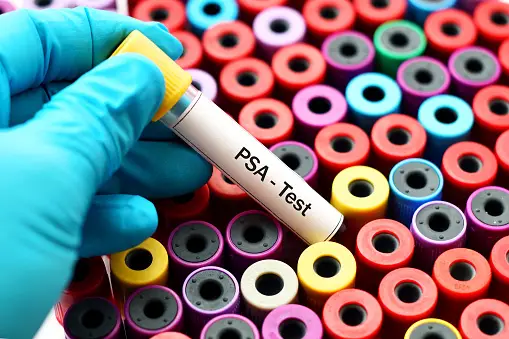PSA Testing - Another Pharma Boondoggle?
PSA Testing - Another Pharma Boondoggle?
By Sharyn Fuller, www.HEALNC.net columnist

Disease mongering turns healthy people into patients, wastes precious resources, and causes iatrogenic (physician induced) harm. It is the selling of sickness that widens the boundaries of illness and grows the markets for those who sell and deliver treatments.
For example, PSA screening in healthy men is a three-billion-dollar-a-year business, not to mention the follow-up tests, procedures and drugs totaling billions more. The reason prostate cancer treatment is a huge, lucrative industry is because conventional wisdom has been that measuring a healthy man’s level of PSA in his blood – already being taken during a routine physical – is a beneficial way to screen for prostate cancer, and that catching prostate cancer early increases the patient’s chances for a longer, healthier life.
But is this true?
Immunologist and microbiologist Dr. Richard Ablin hoped to catch prostate cancer early, and in 1970 discovered PSA while he was looking for a cancer-specific antigen. PSA – Prostate-specific Antigen - is a protein secreted by the prostate to liquify semen to enhance its ability to swim freely, and a tiny amount is released into the bloodstream. However, Dr. Ablin was disappointed to realize that it was found in both benign and malignant tumors, so he determined it to be useless as a cancer marker.
But when the prostate is removed, the source of the protein is also removed; because of this, testing the blood for PSA allows a doctor to follow a patient after treatment in case any cancer cells have spread or metastasized before they could be removed. As a result, in 1986 the FDA approved the use of the PSA test as a harbinger of the recurrence of prostate cancer, which is a legitimate use of the test.
Other scientists, however, decided to pick up on Dr. Ablin’s research, and despite the fact that it also turns out the PSA test has a 78% false-positive rate, this ultimately resulted in the recommendation and then approval by the FDA to use the PSA test also as a screening tool.
Why did a test with such a high failure rate get approved?
At an FDA Advisory Committee Hearing in 1993, many members opposed the test. However, according to Dr. Ablin, who obtained the transcripts of the meeting and also spoke with some of those present, lobbyists were in attendance along with prostate cancer support groups, and the atmosphere was circus-like and chaotic. There was screaming and yelling that, “Men are dying, you have to approve this test!” from the prostate cancer advocacy groups. In 1994, based on the 1993 hearing, the FDA approved it. But Dr. Ablin opposed this ruling, stating, “With the 78% false-positive rate, and being wrong 80% of the time, I don’t know how the test was approved….I can’t say anything because I can’t prove it, but something went on to lead to this approval.”
After giving numerous interviews on the subject, in 2015 Dr. Ablin published “The Great Prostate Hoax,” in which he firmly declares that “the PSA test NEVER should have been approved as a screening tool for the general population.” The fact that there is now better treatment for prostate cancer makes early detection even less important.
In 2011 the US Preventative Services Task Force (USPSTF) – an organization with no conflict of interest – examined the PSA controversy, and declared that prostate screening should be abandoned. The headline of an article in The New York Times in early 2012 read, “U.S. Panel Says No to Prostate Screening for Healthy Men."
“Unfortunately, the evidence now shows that this test does not save men’s lives,” said Dr. Virginia Moyer, a professor of pediatrics at Baylor College of Medicine and chairwoman of the task force. “This test cannot tell the difference between cancers that will and will not affect a man during his natural lifetime. We need to find one that does.”
There are 4 major problems with the test:
The test is not cancer-specific.
The definitive value – men with a low level in their blood can have cancer, men with high levels may not.
A clinician cannot tell the difference between inactive, slow-growing cancer and aggressive life-threatening cancer, therefore removing some prostates unnecessarily.
Prostate cancer is an age-related disease. 65% of men between the ages of 60-69 have it, but it’s rarely aggressive.
A few factors that can innocently raise PSA in blood:
Age
Inflammation or infections
Medical procedures, such as catheter insertions
Benign Prostatic Hyperplasia (prostate enlarged but not cancerous)
Ejaculation
Vigorous bike riding
Warm climates
A few factors that can lower PSA in blood:
Statin drugs
Non-steroidal anti-inflammatory drugs
Changes in labs or testing methods.
Are there any downsides to having one’s prostate removed?
According to one study, 18 months after the surgery up to 60% of men remain impotent, the risk of incontinence is also significant, and there are other side effects.
Despite all this, in 2017 the American Urological Association applied intense pressure on the USPSTF to change its guidelines, which were then updated to recommend that doctors should discuss the pros and cons of a PSA test before having it done, and to be HONEST with their patients about the risks and benefits. Yet, only 1 in 10 men report having this discussion. A 2019 pilot study in Germany showed that practices varied wildly. (Interestingly, almost 50% of GPs were ambivalent or negative about the test, but all the urologists supported it.)
In a 2014 Finnish Prostate Cancer Screening Trial, with over 80,000 men participating, a test was done every 4 years for 12 years. The trial concluded that there was no benefit to screening, EVEN with family history. Men with family history were more likely to be diagnosed with cancer, creating all kinds of medical procedures down the road, but there was no reduction in mortality.
A 10-year randomized clinical trial of 415,000 men published in JAMA in 2018 also found that there was no significant difference in prostate cancer mortality between the control and intervention group.
Why have some studies concluded that PSA screening is useful?
There are 2 statistical ways of comparing a control group to an intervention group – Relative vs. Absolute. Relative indicates the change in percentage. Absolute measures the difference between the original number and the new number.
In a Harvard Health Blog published in 2020, Steven J. Atlas, MD, MPH, explained that while the benefit of PSA testing may seem large in relative terms (20-30%), it is small in absolute terms. 1,000 men have to be screened to prevent one prostate cancer death, while the harms wrought to those with a false-positive PSA test – which again, has a failure rate of 78% – can be significant. Over-detection and over-treatment have the potential to drastically reduce a man’s quality of life from the side effects.
Bottom line - every year approximately 35,000 men die of prostate cancer, so it would certainly behoove one who has a symptom to seek professional advice.
But should a healthy man have a PSA screening test at an annual physical? Until we can do a better job figuring out who needs treatment when prostate cancer is found, and how to make sure we avoid harming those without such disease, current evidence suggests men should navigate their decision with caution.
THIS WEBSITE IS NOT INTENDED FOR PROVIDING MEDICAL ADVICE
